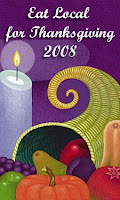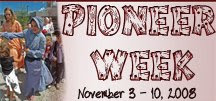 With all this yackety-yacking about my pastured heritage turkey, there seemed to be some interested in doing a follow-up or, post-mortem, on what we all thought of the turkeys we chose.
With all this yackety-yacking about my pastured heritage turkey, there seemed to be some interested in doing a follow-up or, post-mortem, on what we all thought of the turkeys we chose.This was the first time we got a heritage bird that was pasture raised. In the past we have gotten organic "free-range" turkeys that have always tasted a lot better than the standard commercial butterball style turkey. This year's turkey was just as moist and tasty as the basic organic bird, but its anatomy and flavor was totally different.
There was quite a bit of meat on the bird and it was more like pork than turkey. It wasn't flavorless like your average turkey and it had an amazingly thick layer of subcutaneous fat on it, which made it super-moist. I'm not sure if that's because of the breed or because it was pasture raised. Not too surprisingly it didn't have humongous breasts, but they weren't paltry either and it had a good bit of meat on the legs. The most striking thing was how sturdy the carcass was - probably because it spent all its days running around on a farm.
For those of you who tried out a turkey you hadn't had before (organic, heritage, wild, free-range, pastured, etc.), did you notice a difference? If you spent extra money getting a more high-falutin' bird, would you do it again?
Don't forget - you still have time to enter my Thanksgiving giveaway. It's too hard to pick just one of you so I think I'll do a random draw. So, if you've not entered because you didn't want to "compete", don't worry about it. You'll have an equal chance.


















